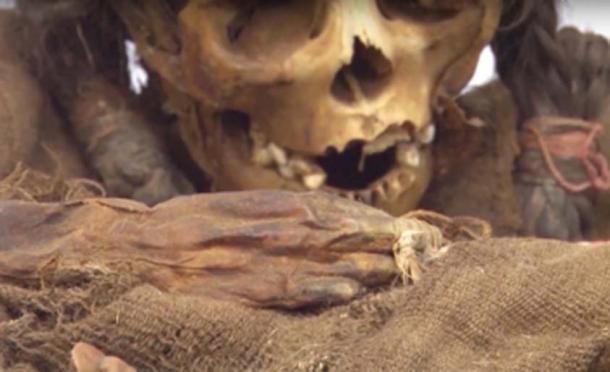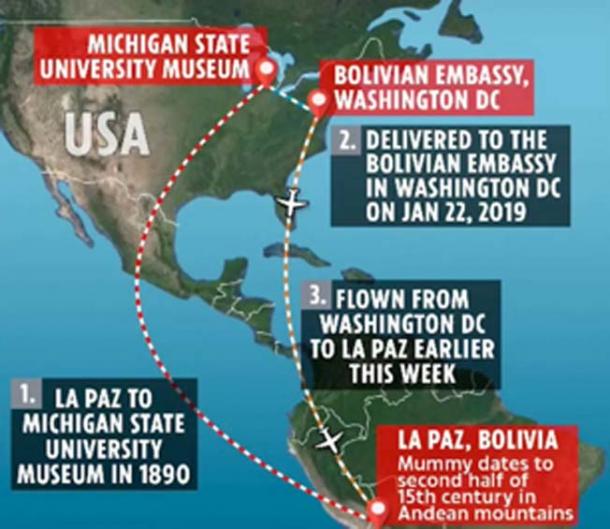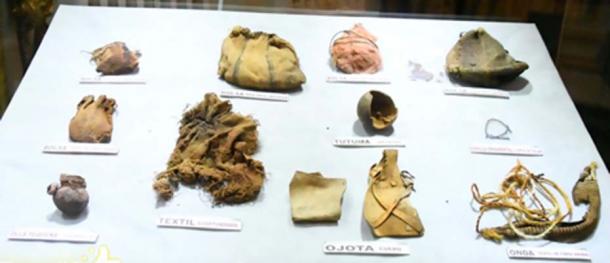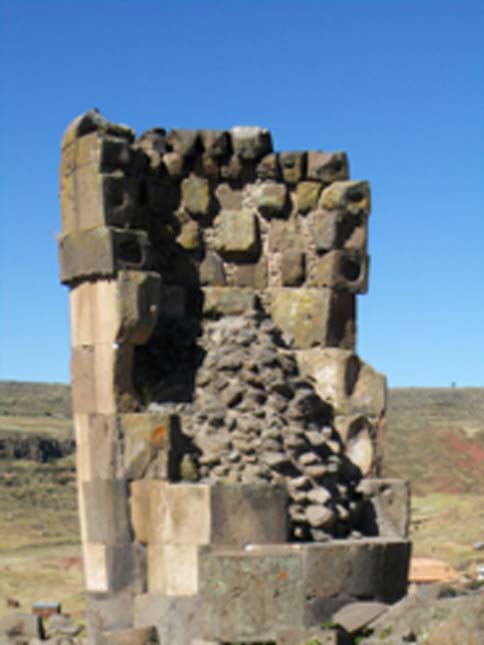
8-Year-Old ‘Princess’ Mummy Finally Laid to Rest in Her Home Bolivia
An incredibly well-preserved and rare young female mummy is finally being returned from North America to her rightful home in Bolivia.
129 years after being donated to the Michigan State University Museum (MSU), Ñusta, (Quechua for ‘princess’), a 500-year-old mummified Inca girl has been returned to the Bolivian highlands near La Paz. And according to Culture Minister Wilma Alanoca this is the first time that archaeological human remains have been repatriated with the high-Andean country.
About 8 years old when she died, ‘Princess’ was buried in an alpaca wool dress and her excellent state of preservation means that the young girl’s carefully combed black hair braids are exactly like they were on that fateful day she was laid to rest, and in her tiny hands she grips a handful of small feathers. Radiocarbon tests of the mummified girl determined that she lived in the second half of the 15th century which saw the arrival of the Spanish conquistador Francisco Pizarro González and the subsequent collapse of the Inca civilization.

The princess mummy was found gripping feathers. (Inside Edition / YouTube)
Andean Highlands Ancient Princess
In an article on Federal News Network, William A. Lovis, an MSU emeritus professor of anthropology who worked for several years to bring Ñusta’s remains home, said that despite the fact that she was called ‘Princess’, it is not yet known if she was indeed of the elite class. However, the answer to this question will become apparent after DNA studies determine what she ate during her few short years alive on the planet.
The mummy was returned to Bolivia a fortnight ago with logistical help from the U.S. embassy in La Paz. Her ritualistic funerary objects will be on exhibit in La Paz until November 2nd, while the remains are being preserved in a refrigerated chamber at the National Archaeology Museum in downtown La Paz, Bolivia.
- Mummy À La Mode: Elaborate Treatment of the Square-Faced Mummy with Intricate Décor
- Mummy Juanita: The Sacrifice of the Inca Ice Maiden
- Ecuador’s Mummy of Guano is the Key to Understanding a Painful Global Disease

The mummy’s trip home. ( Tintuzlife / YouTube)
A whole new scientific study will begin in November to gather further data from the mummy. The scientists told reporters that “Still, many mysteries remain unsolved”.
The Mummy is of Aymara Origins, Inca Sacrifice
The little girl was ethnically from the Aymara, a native people that flourished towards the late intermediate period after the fall of the Tiahuanaco culture who built the city of Tiwanaku with its temples including Puma Punku located near Lake Titicaca. The Aymara Kingdom developed between 1200 AD and 1438 AD, at which time they faced the military conquest of the Incas, so while the little girl lived in Inca controlled lands, she was from a group known as the Pacajes, who dominated the central highlands at 13,780 feet (4200 meters) above sea level in the southwest of the Department of La Paz, Bolivia.
The young girl was originally discovered in a stone tomb and an article in The Sun tells us that she was found with “sandals, a small clay jar, pouches, feathers, and several types of plants including maize and coca”. Specialists think these items were included in the burial to help the dead transition into the next life and Lovis said perhaps the girl was “an important person”, but he also said her death might have been “an Inca sacrifice to appease or as an offering to Inca deities”.

Grave goods found with the mummy. (Tintuzlife / YouTube)
Princess Mummy - Drugged And Murdered
When the Inca claimed the Aymara Kingdom after 1438 AD religious rituals and rites were overhauled, and child sacrifice (Qhapaq hucha) was practiced during and after important events, for example, upon the death of the Sapa Inca (king) or while struck with a famine or after devastating city-collapsing earthquake.
Children were selected as sacrificial victims because they were considered to be the purest of beings and this New York Times article explains in detail the discovery of three Inca child mummies unearthed in 1999 from the 22,000-foot summit of Mount Llullaillaco, a volcano 300 miles west of La Paz near the Chilean border in Argentina “entombed on a bleak and frigid mountaintop 500 years ago as a religious sacrifice”. Scientists know that these three children died while under the influence of mind altering drugs and that they had “frozen to death as they slept”.
Sacrifice to the Lords Of the Sky
For the reason as to why this little girl had been sacrificed we need only consider the environment she was found in, as it is one of the most disadvantaged regions of the country where food and water availability has always been threatened by severe climate extremes, including drought and hail. While the Inca sacrificed children after massive landslides covered fields and when rivers burst their banks, they also offered human sacrifices during prolonged droughts.
David Trigo, who heads the National Archaeology Museum in La Paz told reporters that the excellently preserved objects “open new doors into a society that has barely been studied,” and referred to Inca and Aymaran traditions in which stone tombs known as ‘chullpa’ were reserved for community elites, suggesting she might indeed have been the daughter of a local dignitary.

The chullpa which housed the mummy’s remains suggests that she was of an elite family. (Magnus Manske / CC BY-SA 3.0)
Top image: The mummy Ñusta. Credit: Michigan State University
By Ashley Cowie















